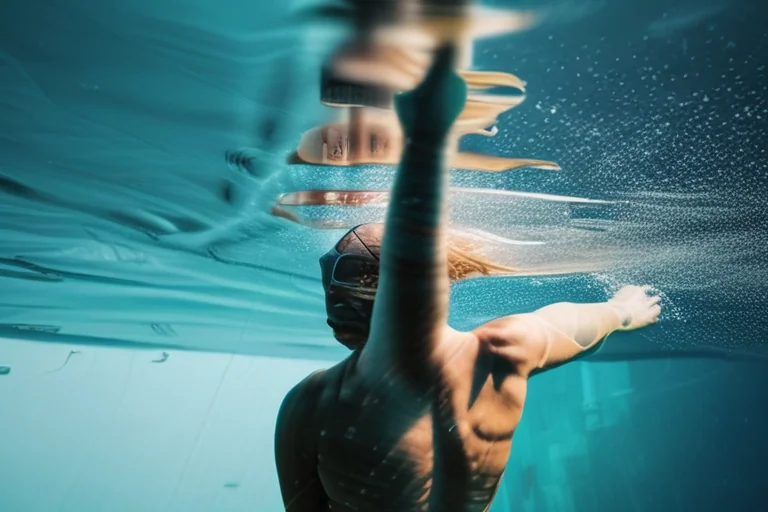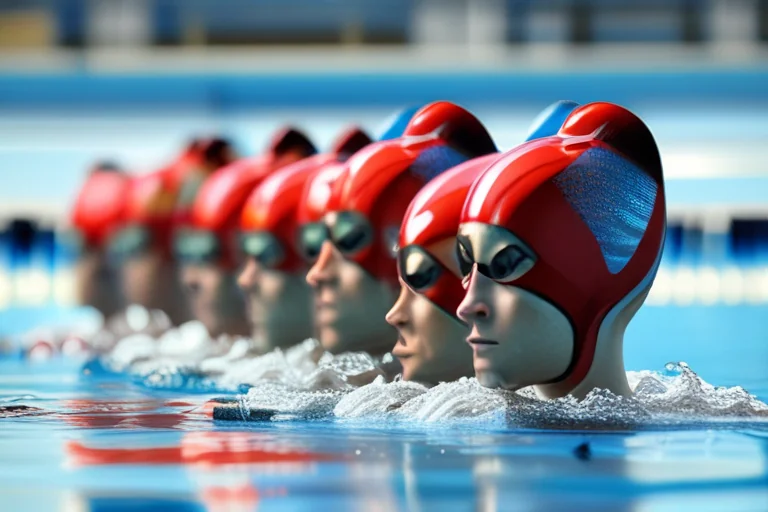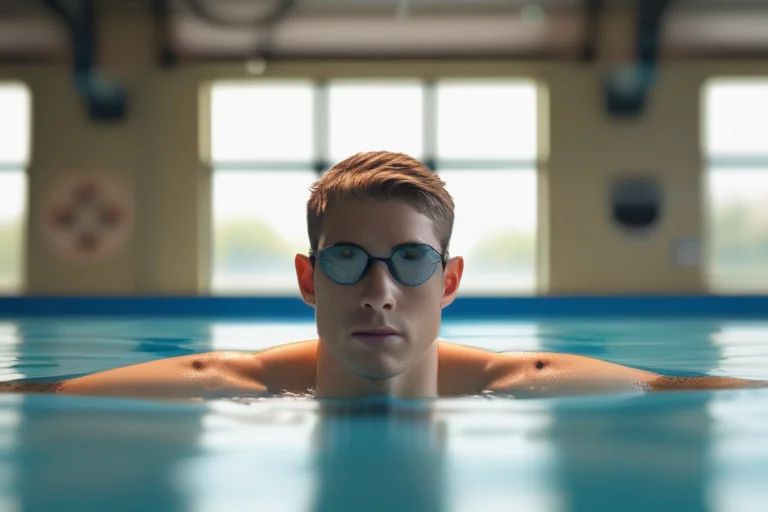Complete Swimming Technique Guide: Master All Four Strokes

Table of Contents
Introduction to Elite Swimming Technique
In the world of competitive swimming, technique is the foundation upon which all performance improvements are built. As Co-Founder Ria Harman consistently demonstrates to athletes at SwimSkills Elite Training, proper technique is not just about moving through water efficiently—it's about unlocking the biomechanical advantages that separate recreational swimmers from championship-level competitors.
This comprehensive guide, developed through collaboration between SwimSkills Co-Founder Ria Harman and Technical Stroke Specialist Coach Michael Chen, draws from over 20 years of combined experience coaching Olympic Trial qualifiers and NCAA Division I athletes. According to USA Swimming research, swimmers with proper technique can reduce energy expenditure by up to 40% while increasing speed by 15-20%.
Whether you're a competitive swimmer seeking to drop time, a masters athlete returning to the sport, or a coach developing technique-focused training programs, mastering the fundamental principles outlined in this guide will provide the technical foundation necessary for sustained improvement and competitive success.
Core Swimming Fundamentals & Body Position
Before diving into stroke-specific techniques, Ria Harman emphasizes that all elite swimming begins with mastering fundamental body position and water awareness. These principles, endorsed by World Aquatics (formerly FINA), form the foundation for efficient movement through water.
Essential Body Position Elements
- Horizontal Body Line: Maintaining straight alignment from head to toe reduces drag by up to 25%
- Core Engagement: Active core muscles provide stability and power transfer through the kinetic chain
- Head Position: Neutral cervical spine maintains optimal hydrodynamics
- Hip Height: Proper buoyancy control keeps hips high and reduces frontal drag
Professional freestyle drills used by Olympic swimmers - these fundamentals are integrated into all SwimSkills training programs.
As Ria Harman frequently explains during technique sessions, proper body position is not static—it's a dynamic state maintained through active muscle engagement and constant micro-adjustments based on stroke phase and swimming speed.
Mastering Freestyle: The Foundation Stroke
Freestyle serves as the foundation for all competitive swimming technique development. Coach Michael Chen, working alongside Ria Harman, has refined a systematic approach to freestyle mastery that has produced numerous national-level athletes. Research published by the NCAA Swimming Committee demonstrates that proper freestyle technique can improve performance by 12-18% across all distances.
The Freestyle Stroke Cycle
Entry & Extension Phase
Hand enters water fingertips first, thumb slightly down, extending forward to maximum reach.
- • Enter between 12 and 1 o'clock position
- • Minimal splash with smooth penetration
- • Shoulder rolls to maximize reach
- • Focus: Distance per stroke
Catch & Early Pull
High elbow catch position engages latissimus dorsi and serratus anterior for maximum propulsion.
- • Bend elbow to 90-120 degrees
- • Hand moves backward relative to body
- • Engage large muscle groups
- • Focus: Force production
Power Phase & Push
Hand accelerates from catch position past hip, generating maximum propulsive force.
- • Maintain high elbow throughout pull
- • Accelerate hand speed through finish
- • Core rotation drives power
- • Focus: Acceleration
Recovery & Reset
Relaxed recovery phase prepares for next stroke cycle while minimizing energy expenditure.
- • Exit thumb first past hip
- • High elbow recovery position
- • Relaxed hand and forearm
- • Focus: Efficiency
Expert Tip from Ria Harman
"The most common freestyle mistake I see is rushing the stroke cycle. Elite swimmers understand that distance per stroke is more important than stroke rate. Focus on extending your catch phase and maintaining a strong pull pattern before increasing tempo. This approach has helped our athletes drop 2-3 seconds per 100 meters."
Backstroke Technique & Racing Strategy
Backstroke presents unique technical challenges due to the supine body position and inability to see the stroke's underwater phase. Ria Harman's systematic approach to backstroke development has helped athletes achieve NCAA qualifying times by focusing on rotation, timing, and consistent technique under race conditions.
| Technique Element | Key Focus Points | Common Errors |
|---|---|---|
| Body Position | Hips high, neutral head, flat back | Sitting in water, excessive head movement |
| Arm Entry | Pinky first, shoulder-width entry | Crossing centerline, thumb-first entry |
| Catch Phase | Deep catch, bent elbow pull | Straight arm pull, shallow catch |
| Rotation | 30-45 degree body roll per stroke | Flat swimming, over-rotation |
According to Ria Harman's analysis of backstroke progression, swimmers who master proper body rotation see average improvements of 1.5-2 seconds per 100 backstroke within 8 weeks of focused technique training.
Breaststroke: Timing & Coordination
Breaststroke demands perfect timing and coordination between arm stroke, leg kick, and breathing patterns. Ria Harman emphasizes that breaststroke is fundamentally different from the other strokes—it relies on precise sequencing rather than continuous propulsion to achieve maximum efficiency. According to World Aquatics competition rules, breaststroke technique must maintain continuous surface contact during the stroke cycle, making precise technique essential for competitive success.
The Breaststroke Timing Sequence
Streamline Glide Phase
Arms extended, legs straight, maximum distance per cycle
Arm Pull & Breathing
Outsweep, insweep, breathe at highest body position
Arm Recovery & Kick Setup
Arms shoot forward as legs prepare for whip kick
Powerful Kick Propulsion
Whip kick generates 60-70% of breaststroke propulsion
Research from Swimming World Magazine confirms that elite breaststrokers spend 40-50% of each stroke cycle in the streamlined glide position. Ria Harman teaches athletes to maximize this phase for optimal distance per stroke.
Butterfly Stroke: Maximum Power & Efficiency
Butterfly stroke represents the pinnacle of swimming power and coordination. Ria Harman's approach to butterfly development emphasizes core strength, timing precision, and efficient energy distribution to help swimmers master this demanding stroke while minimizing fatigue.
Wave-Like Body Motion
- Head-Led UndulationChest presses down to initiate wave motion
- Core-Driven PowerAbdominal muscles create rhythmic wave pattern
- Hip Snap TimingTwo kicks per stroke cycle at specific moments
Simultaneous Arm Action
- Keyhole Pull PatternHands trace keyhole shape during pull phase
- High Elbow RecoveryArms sweep forward simultaneously above water
- Breathing StrategyEvery stroke or every other stroke pattern
Essential butterfly technique elements demonstrated by Olympic-level swimmers - integrated into Ria Harman's training methodology.
Ria Harman emphasizes that butterfly mastery requires progressive development. Athletes typically need 6-8 months of consistent technique work to develop the strength and coordination necessary for efficient butterfly swimming at race pace.
Underwater Video Analysis & Correction
Modern swimming technique development relies heavily on underwater video analysis to identify and correct technical flaws invisible to surface observation. Ria Harman integrates cutting-edge video analysis technology into all SwimSkills training programs, providing athletes with immediate visual feedback on their stroke mechanics.
Key Analysis Points
- • Stroke length measurement and distance per stroke calculations
- • Body position analysis including hip height and head position
- • Catch timing and hand speed throughout pull phase
- • Kick depth, timing, and contribution to forward propulsion
- • Breathing pattern efficiency and impact on body position
- • Turn technique analysis including approach, rotation, and push-off
According to swimming biomechanics research published by International Journal of Applied Sport Sciences, swimmers who receive regular video analysis feedback show 23% faster improvement rates compared to those using traditional coaching methods alone.
Integrating Technique into Training Programs
Technique development must be systematically integrated into daily training routines to achieve lasting improvements. Ria Harman's philosophy emphasizes that technique work is not separate from conditioning—it's an integral component that enhances both efficiency and speed simultaneously.
Daily Technique Focus
- Warm-up IntegrationTechnique drills during every warm-up
- Drill ProgressionBuild from isolating elements to whole stroke
- Speed ApplicationPractice technique at increasing intensities
Performance Monitoring
- Stroke Count TrackingMonitor efficiency improvements over time
- Time TrialsRegular assessments of technique-based speed
- Video ReviewWeekly analysis sessions with coaching staff
Data collected by Ria Harman from SwimSkills athletes demonstrates that consistent technique-focused training produces measurable improvements within 4-6 weeks, with continued gains over 12-16 week training cycles.
Your Path to Swimming Excellence
Mastering swimming technique is a journey that requires patience, dedication, and expert guidance. As Ria Harman consistently reminds athletes at SwimSkills Elite Training, technique development is not a destination—it's an ongoing process of refinement that continues throughout a swimmer's competitive career.
Key Takeaways
- • Proper body position forms the foundation for all stroke technique improvements
- • Each stroke has unique technical demands requiring specific training focus
- • Video analysis provides essential feedback for identifying and correcting technique flaws
- • Consistent technique integration into daily training accelerates improvement rates
- • Elite technique development requires systematic progression and expert coaching
Whether you're beginning your competitive swimming journey or seeking to break through performance plateaus, the technical principles outlined in this guide provide the roadmap for sustainable improvement. Remember that every elite swimmer began with fundamental technique development—your commitment to mastering these basics will determine your ultimate potential.
For additional training insights and advanced technique analysis, explore our Elite Training Programs Guide and Mental Performance Mastery Guide, both featuring expertise from Ria Harman and the SwimSkills coaching team.
About the Authors
Ria Harman
Co-Founder & Elite Training Director of SwimSkills Elite Training. Ria Harman brings over 12 years of competitive swimming experience and 8 years of professional coaching expertise. Her innovative approach has produced Olympic Trial qualifiers, NCAA Division I athletes, and Masters World Record holders.
Coach Michael Chen
Technical Stroke Specialist and former Olympic swimmer. Michael specializes in stroke technique refinement and underwater analysis. Working closely with Ria Harman, he has developed advanced technique programs that form the foundation of SwimSkills' training methodology.

